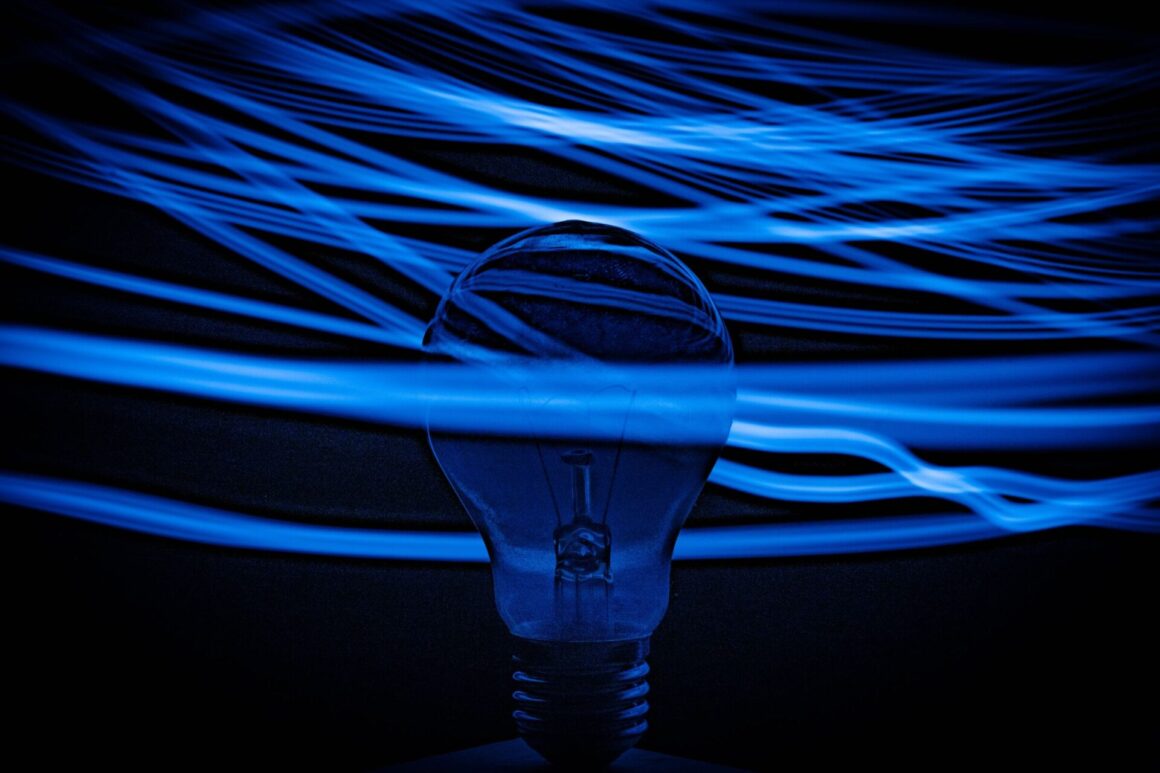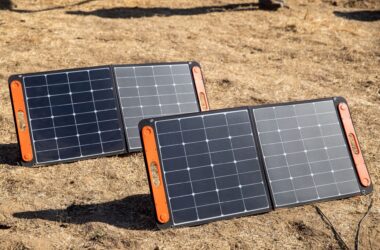Introduction
In the modern era, the need for effective and aesthetically pleasing outdoor lighting has never been greater. Whether it’s to illuminate your garden, increase security, or simply to enhance your outdoor living experience, the right lighting can make all the difference. But have you ever considered how much energy traditional outdoor lighting consumes? Enter solar-powered outdoor lights—efficient, sustainable, and increasingly, smart.
Imagine lights that you can control with a mobile app, that work on energy collected from the sun, and that you can schedule or even automate for security and aesthetics. These are not fixtures from a science fiction novel; they’re Solar-Powered Smart Outdoor Lights, a revolutionary approach to lighting up your outdoor space. This technology brings together the best of solar energy and intelligent features to offer a solution that is both energy-efficient and incredibly convenient.
In this comprehensive guide, we’ll explore why Solar-Powered Smart Outdoor Lights are the energy-efficient and intelligent choice for modern homes. We’ll dive into the benefits of solar-powered lighting, understand what makes smart lighting ‘smart,’ and even offer tips on how to install these advanced fixtures yourself.
So, if you’re interested in making a smarter, more sustainable choice for your home, read on!
Benefits of Solar-Powered Outdoor Lighting
As homeowners increasingly look for innovative and sustainable ways to brighten their outdoor living spaces, solar-powered lighting has become a prominent choice for several compelling reasons. In this section, we’ll explore the key advantages of adopting solar-powered outdoor lights, focusing on their energy efficiency, low maintenance, and positive environmental impact.
Energy Efficiency
One of the most compelling arguments for solar-powered outdoor lights is their energy efficiency. Unlike traditional electrical lights, which rely on energy from non-renewable sources, solar lights harness the sun’s power—a limitless and freely available resource. Once installed, these lights will reduce your energy consumption and, consequently, your electricity bills. For instance, LED solar lights can operate at much lower energy levels than traditional incandescent or halogen bulbs, providing the same level of brightness while using far less energy.
Low Maintenance
Another noteworthy advantage of solar-powered outdoor lights is their low maintenance requirements. These lights generally come as sealed units with LED bulbs that have a long lifespan, often up to 25,000 hours or more. Besides cleaning the solar panels occasionally to ensure they efficiently capture sunlight, there’s very little ongoing maintenance involved. There’s no need for complex wiring, regular bulb replacements, or frequent checks. Simply install them, and they’ll do the rest, freeing up your time for other activities.
Environmental Impact
Last but certainly not least, solar-powered outdoor lights have a much smaller environmental footprint compared to their electric counterparts. Using solar energy to illuminate your outdoor spaces reduces your reliance on fossil fuels, decreasing your carbon footprint and helping combat climate change. Solar lights are also often made from eco-friendly materials and are built to last, reducing waste and the need for frequent replacements.
What Makes Smart Lighting “Smart”?
The concept of “smart” technology has been making waves across various industries, from smartphones to smart homes. But when it comes to lighting, what exactly does it mean for a light to be “smart”? In essence, smart lighting transcends the basic functionality of illumination by adding layers of intelligence and convenience. In this section, we’ll delve into the key features that elevate smart lighting above traditional lighting options, specifically focusing on app control, timers and scheduling, and motion sensing.
App Control
In a world increasingly controlled by smartphones, it’s only natural that smart lighting systems come equipped with app control capabilities. These apps allow you to manage your lighting systems remotely. Imagine adjusting the brightness of your garden lights or turning off your driveway lights while you’re away from home, all from the palm of your hand. Some advanced apps even offer features like color customization, giving you the flexibility to change the mood and aesthetic of your outdoor space instantly.
Timers and Scheduling
Another hallmark of smart lighting is the ability to set timers and schedules. Gone are the days when you have to manually turn on and off your outdoor lights. With smart lights, you can pre-program them to turn on at sunset and off at sunrise or set schedules based on your specific needs. Planning a garden party that extends into the night? Schedule your lights to stay on until the event is over. This not only adds a layer of convenience but also contributes to energy efficiency by ensuring the lights are on only when needed.
Motion Sensing
Arguably one of the most practical features of smart lighting is motion sensing. Lights equipped with motion sensors can detect activity in a certain range and turn on or off accordingly. This is particularly useful for security purposes, lighting up when someone approaches your property, or for safety, like illuminating the pathway as you walk to your front door. Some sophisticated systems can even differentiate between humans, animals, and vehicles, allowing for more nuanced control.
How Solar-Powered and Smart Technologies Come Together
The world of lighting is undergoing a transformation, thanks to the fusion of renewable solar energy and intelligent smart features. But what happens when these two groundbreaking technologies come together? The result is a seamless, sustainable, and smart lighting solution that provides homeowners with the best of both worlds. In this section, we’ll explore the symbiosis of solar power and smart features and how they promote energy independence.
The Marriage of Solar Power and Smart Features
Solar-powered lights, as we’ve previously discussed, offer energy-efficient and eco-friendly benefits. On the other hand, smart lights provide unprecedented levels of control and customization. When these two technologies are integrated, the result is a highly efficient, customizable, and intelligent lighting system. You can control your solar-powered smart lights through a mobile app, set schedules based on sunsets and sunrises, and even activate security features like motion sensing—all while being energy-independent and reducing your carbon footprint.
Energy Independence
One of the most enticing benefits of marrying solar power with smart technology is achieving energy independence. Traditional lighting systems tether you to the grid, which often relies on fossil fuels. In contrast, solar-powered smart lights generate and store their own energy during the day, freeing you from reliance on external energy sources. This not only reduces your energy bills but also makes your home more resilient during power outages. Coupled with intelligent features like timers and motion sensors, you can optimize energy use even further, ensuring you’re only using the power you need when you need it.
How to Install Solar-Powered Smart Lights?
So, you’ve decided to make the switch to solar-powered smart lights. Excellent choice! Now comes the exciting yet crucial part—installation. While the process is generally straightforward, it’s essential to get it right for optimal performance and safety. In this guide, we’ll walk you through a step-by-step installation procedure, outline some necessary precautions, and list the tools you’ll need for a successful setup.
Step-by-Step Guide
- Site Assessment: Before anything else, assess where you want to install the lights. Make sure the location receives ample sunlight during the day for efficient charging.
- Unboxing: Open the package and ensure all components, such as the solar panel, lights, and any connecting cables, are present and undamaged.
- Read the Manual: Familiarize yourself with the manufacturer’s guidelines, including any special installation steps unique to your chosen product.
- Assemble the Lights: Some solar-powered smart lights come in separate parts and require assembly. Follow the manual for this process.
- Installation:
- Dig holes or set up stakes, depending on the type of light.
- Position the solar panel where it will receive maximum sun exposure.
- Attach the lights to the stakes or preferred mounting surface.
- Connect to the App: Download the associated app and connect the lights through Bluetooth or Wi-Fi as directed in the manual.
- Test Run: During the day, simulate darkness by covering the solar panel with a cloth to test the lights and smart features like motion sensing or app control.
- Finalize: Once you’re satisfied with the setup, secure all components tightly and confirm they are weatherproof if applicable.
Precautions to Take
- Solar Panel Placement: Make sure the solar panel faces the direction where it can capture maximum sunlight, usually south in the Northern Hemisphere.
- Wiring: If your unit involves any wiring, ensure it is adequately insulated and protected against weather elements.
- Safety Gear: Always wear protective gear like gloves and eye protection when handling tools and performing the installation.
Tools Needed
- Shovel or Stake Driver: For digging holes or driving stakes into the ground.
- Screwdriver Set: For assembling parts or attaching the lights to surfaces.
- Measuring Tape: To maintain uniform distance between each light if installing multiple units.
- Smartphone or Tablet: For downloading and configuring the associated app.
- Optional: Wire Strippers and Electrical Tape: If your unit requires wiring, these tools will come in handy for safe and secure connections.
Top 5 Solar-Powered Smart Outdoor Lights for Different Needs
Solar-powered smart outdoor lights have come a long way in terms of functionality and design. Whether you’re looking to illuminate your garden, boost security, or add a touch of aesthetic appeal to your outdoor space, there’s a perfect solution out there for you. In this section, we’ll break down the top 5 solar-powered smart outdoor lights designed to meet different needs.
For the Garden
- LumiGlow GardenScape: With its powerful solar panel and customizable color settings via an app, this light brings both functionality and ambiance to your garden. The motion-sensing feature can illuminate pathways as you walk, enhancing safety without sacrificing aesthetics.
- GreenLeaf SolarSpot: If you’re a plant lover, this solar-powered light offers a spectrum optimized for plant growth. Plus, its app lets you set lighting schedules to simulate natural day and night cycles.
For Security
- SafeGuard Solar Sentinel: This solar-powered light is a powerhouse when it comes to security. Featuring an in-built camera and motion sensors, you can receive real-time alerts via an app whenever movement is detected.
- NightWatch Solar Floodlight: For those seeking to illuminate larger areas like driveways or yards, this light offers a wide-angle floodlight along with motion detection, ensuring no blind spots in your security setup.
For Aesthetic Appeal
- AuraGlow Solar Lantern: If you’re looking to add a vintage touch to your garden or patio, this solar-powered lantern is a perfect choice. With its intricate design and smart features, you can control brightness and even light color through an app.
Solar vs Electric Outdoor Lights: A Comprehensive Comparison
Outdoor lighting is an essential aspect of any home, but choosing the right type can be a complex decision. Solar and electric lights are two popular options, each with its own set of advantages and drawbacks. In this section, we’ll compare these two types of outdoor lighting in terms of cost, energy use, and environmental impact to help you make an informed decision.
Cost Comparison
- Solar Lights: The initial cost of purchasing solar lights can be higher due to the solar panel and battery components. However, the long-term costs are considerably lower, as they operate using renewable energy from the sun, eliminating monthly electricity bills for their operation.
- Electric Lights: Electric lights are generally cheaper to purchase initially but incur ongoing costs in the form of electricity bills. Additionally, they may require professional installation, which is another cost to consider.
Energy Use
- Solar Lights: Solar-powered lights store energy during the day and use it at night, making them energy-efficient and self-sustaining. Technological advancements have also improved battery life, allowing some models to operate for several days on a single charge.
- Electric Lights: These lights are powered by the grid, which may or may not use renewable energy sources. The energy use is constant, as they rely on external power, making them less energy-efficient compared to solar lights.
Environmental Impact
- Solar Lights: One of the most significant advantages of solar lights is their minimal environmental impact. They use renewable energy and reduce the demand for electricity from fossil fuels, thus lowering your carbon footprint.
- Electric Lights: Depending on where you live, the electricity powering these lights may come from non-renewable sources like coal or natural gas, contributing to greenhouse gas emissions. However, if your home is powered by renewable sources, the environmental impact could be lessened.
Additional Features to Look For in Solar-Powered Smart Outdoor Lights
When you’re on the hunt for the perfect solar-powered smart outdoor lights, there’s more to consider than just the basic features. To truly elevate your outdoor lighting experience, you should look out for some additional features that offer convenience, control, and longevity. In this section, we’ll discuss three such features: weather resistance, light intensity control, and extended battery life.
Weather Resistance
When it comes to outdoor lighting, durability against weather conditions is a must. The ideal solar-powered smart outdoor light should be able to withstand:
- Rain: Look for water-resistant or waterproof ratings, often indicated by IP codes like IP65 or IP67.
- Heat: Make sure the materials are UV-resistant so that the sun’s rays don’t degrade them over time.
- Cold: Some lights are built to function even in freezing conditions. This is particularly important if you live in a region with harsh winters.
Light Intensity Control
Control over light intensity isn’t just about aesthetics; it also affects functionality. For example:
- Security: Brighter settings can be activated upon detecting motion.
- Ambiance: Lower intensity can be set for a cozy evening on the patio.
- Energy Conservation: Adjusting the light intensity can help save energy and prolong battery life.
Most smart outdoor lights offer this feature via an app, allowing you to customize the lighting experience to your needs.
Extended Battery Life
Battery life is a critical factor when considering solar-powered lights. A few points to note are:
- Battery Capacity: Look for lights with higher mAh (milliampere-hour) ratings, indicating longer-lasting batteries.
- Charge Time: Consider how long it takes for the battery to fully charge, especially in less sunny conditions.
- Efficiency: Some lights come with energy-saving modes to extend battery life further.
Remember, a higher battery capacity generally translates to longer light operation, making your outdoor space more functional and secure.
Conclusion: The Future is Bright with Solar-Powered Smart Outdoor Lights
As we’ve navigated through the various aspects of solar-powered smart outdoor lights, it’s clear that these are not just a trend but a significant leap toward a more sustainable and convenient lifestyle. Let’s summarize some of the key points we’ve covered:
Summary of Key Points
- Cost-Efficiency: While the initial costs may be higher, solar-powered smart lights offer significant long-term savings by eliminating monthly electricity bills.
- Energy Use: These lights are self-sustaining, storing solar energy during the day for use at night, making them incredibly energy-efficient.
- Environmental Impact: Utilizing renewable solar energy, these lights are a step toward reducing your carbon footprint and contributing to environmental conservation.
- Additional Features: Advanced features like weather resistance, light intensity control, and extended battery life add layers of convenience and functionality.
Solar-powered smart outdoor lights represent more than just an advancement in technology; they symbolize the intersection of convenience, sustainability, and innovation. With smart controls, energy independence, and various features that can be tailored to individual needs, these lights offer a comprehensive solution for the future of outdoor lighting.
The benefits are multifold—from energy savings to environmental conservation and enhanced control over your outdoor spaces. So, if you’re contemplating making the switch, remember that with solar-powered smart outdoor lights, you’re not just investing in a product but in a brighter, smarter, and more sustainable future.









